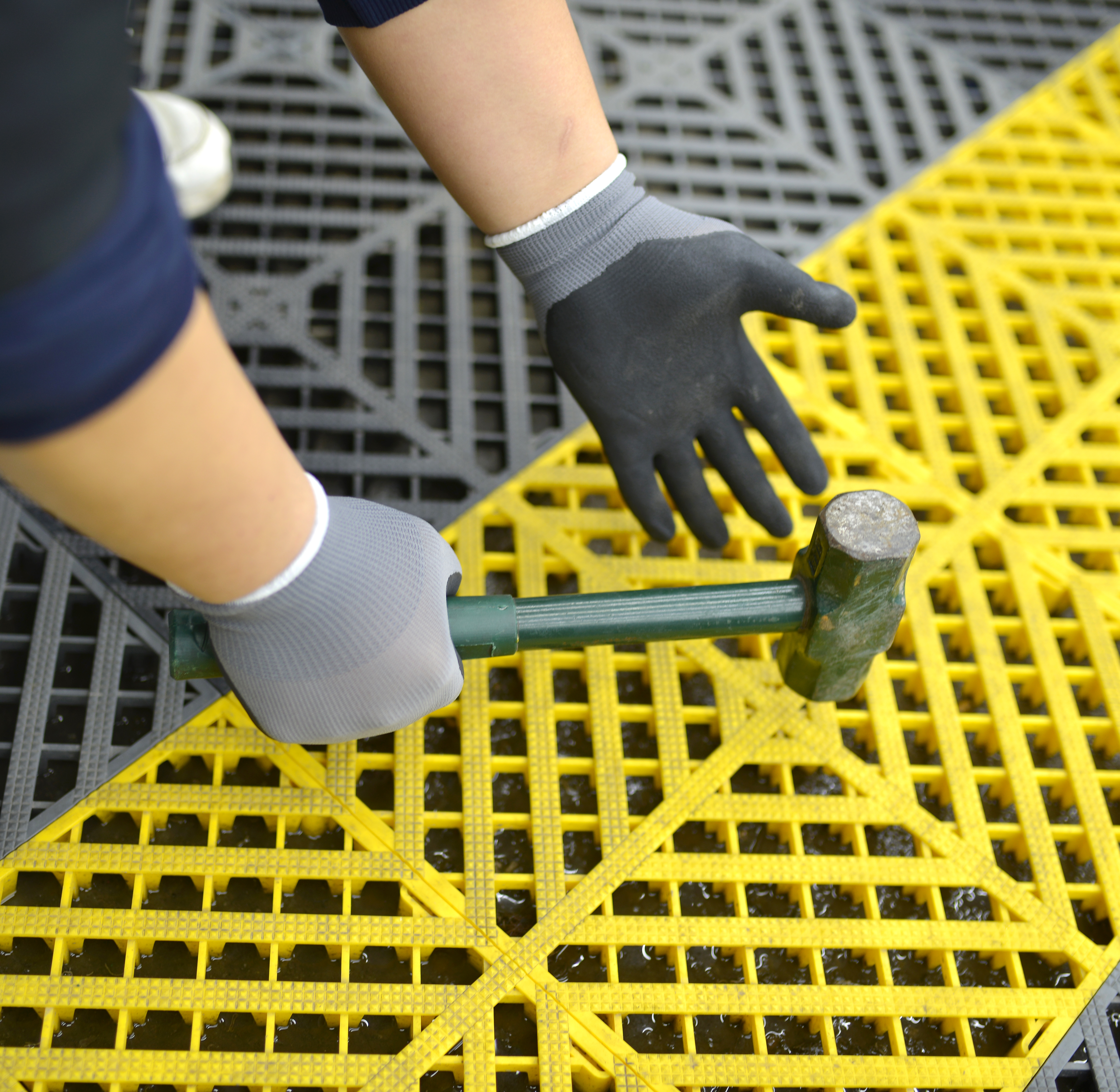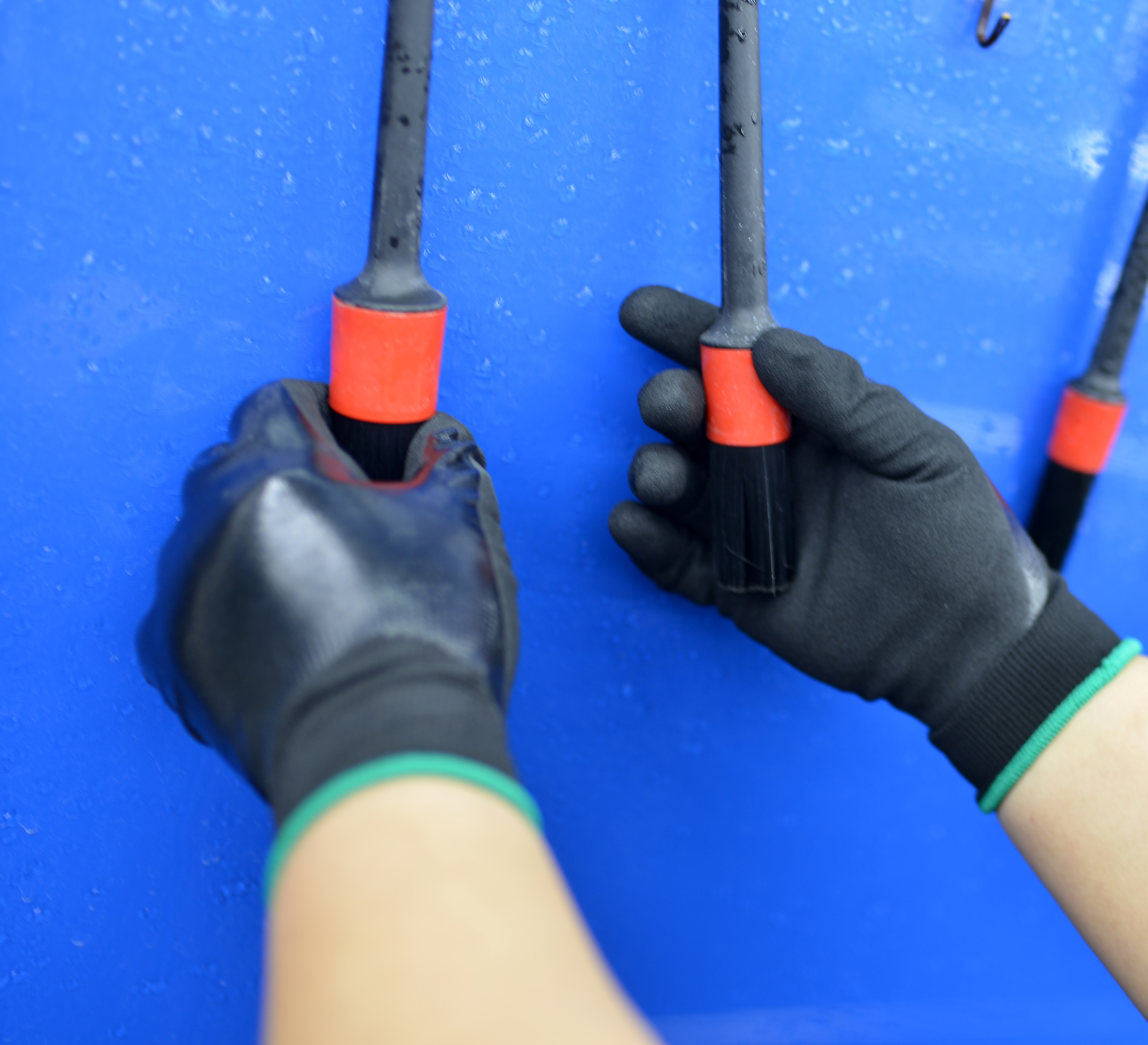 Nitrile coated work gloves are typically made by knitting high-performance materials such as cotton, polyester, and nylon, and then dipping the surface into a layer of nitrile synthetic rubber. Due to the inherent properties of these raw materials—such as oil resistance, abrasion resistance, puncture resistance, and chemical resistance—these safety gloves also possess the same capabilities. They are extremely strong and durable. Compared to latex gloves, nitrile gloves do not trigger allergic reactions, making them an excellent alternative for individuals allergic to natural latex. Nitrile coated gloves offer unparalleled protection.
Nitrile coated work gloves are typically made by knitting high-performance materials such as cotton, polyester, and nylon, and then dipping the surface into a layer of nitrile synthetic rubber. Due to the inherent properties of these raw materials—such as oil resistance, abrasion resistance, puncture resistance, and chemical resistance—these safety gloves also possess the same capabilities. They are extremely strong and durable. Compared to latex gloves, nitrile gloves do not trigger allergic reactions, making them an excellent alternative for individuals allergic to natural latex. Nitrile coated gloves offer unparalleled protection.
However, before choosing these gloves, it is important to gain a deeper understanding of nitrile coated safety gloves. Below is a comprehensive introduction to these gloves.

Advantages of Nitrile Coated Gloves
Chemical Resistance
The most prominent feature of nitrile coated safety gloves is their strong chemical resistance. They can withstand a variety of oils and organic solvent-based chemical products such as benzene, alcohol, and gasoline. These gloves are typically used in environments requiring oil and chemical resistance, such as automotive repair, chemical handling, laboratories, and chemical plants.
Puncture and Tear Resistance
As part of personal protective equipment, nitrile coated safety gloves offer 3 to 5 times greater puncture resistance compared to latex gloves. This is one of the most notable physical properties of nitrile gloves. They are ideal for work environments involving sharp tools, metal parts, or broken glass.
Allergy Prevention
As mentioned earlier, nitrile coated safety gloves are made from synthetic rubber and do not contain natural latex proteins. They are therefore the top alternative for individuals allergic to latex.
High Fit and Flexibility
Nitrile coated safety gloves have excellent elasticity and can perfectly conform to the shape of the hand. After a short period of heat exposure, they can form a second-skin-like feel against the skin. They are ideal for delicate operations such as electronic assembly and medical procedures.
Excellent Abrasion and Durability
Due to their tough and abrasion-resistant material, nitrile coated safety gloves are unlikely to get damaged over short periods and can be worn for long durations. They are particularly suitable when frequent glove changes are not necessary.
Summary
Nitrile coated safety gloves not only protect against chemical hazards like oils and chemicals but also physical hazards like abrasion, cuts, and punctures. They offer excellent dexterity, grip, and durability while ensuring breathability and flexibility. This makes them a popular choice among employers and workers across various industries such as mechanics, painting, general assembly, and construction.
Common Types of Nitrile Coated Work Gloves
Generally, safety gloves are classified based on coating coverage, coating surface texture, and glove thickness/grade.
By Coating Coverage:
Palm-Coated: Coating on palms and fingers only; good breathability.
Half-Coated: Covers the entire palm side including the back of the hand; moderate protection.
Fully-Coated: Covers the entire hand; offers comprehensive barrier and liquid protection.
Double-Coated: Two layers of nitrile coating for enhanced chemical and abrasion resistance.
By Surface Texture:
Smooth Finish: Smooth coating for precision tasks.
Sandy Finish: Enhanced anti-slip effect; ideal for oily or wet environments.
Crinkle Finish: Excellent grip strength; suitable for heavy-duty tasks.
By Thickness and Grade:
Lightweight (15 gauge or higher): Soft and comfortable; suitable for precision assembly.
Mediumweight (13 gauge): Balances flexibility and durability; general-purpose.
Heavyweight (10 gauge or lower): Extra thick and wear-resistant; ideal for heavy-duty environments.

Summary
Applying a layer of nitrile polymer coating to the palm and fingers of gloves made from cotton or polyester is known as the flat dipping technique. This special method creates a seamless coated glove that offers both durability and comfort. As a result, these gloves have quickly become the preferred choice in the automotive, assembly, and warehousing industries.
Choosing the Best Nitrile Coated Work Gloves
To select the best nitrile coated work gloves, you must first understand the environment in which the gloves will be used and any potential hidden hazards. This helps prevent mistakes during selection.
It is important to note that the level of protection offered by the coating is inversely proportional to its thickness—thus, the thickness of the coating is a critical factor.
In addition, make sure the gloves come with certifications and meet international compliance standards to further ensure quality.
Of course, cost-effectiveness is also an important consideration. However, as the saying goes, “you get what you pay for.” Price and quality go hand in hand.
Therefore, consider all aspects carefully during the selection process to avoid unnecessary expenses and ensure you find the right gloves as quickly as possible.

Conclusion
Due to their excellent performance and powerful functions, nitrile coated safety gloves play an irreplaceable role in personal protective equipment. This is why there are many factors to consider when selecting them.
How to Purchase Nitrile Coated Safety Work Gloves?
If you are interested in nitrile coated safety gloves or would like to make a purchase, please contact Aibon as soon as possible. We will be happy to answer all your questions.
How to Measure Glove Sizes – Source: AIBON
Latex gloves– Source: AIBON
Safety gloves– Source: AIBON
Working gloves– Source: AIBON


